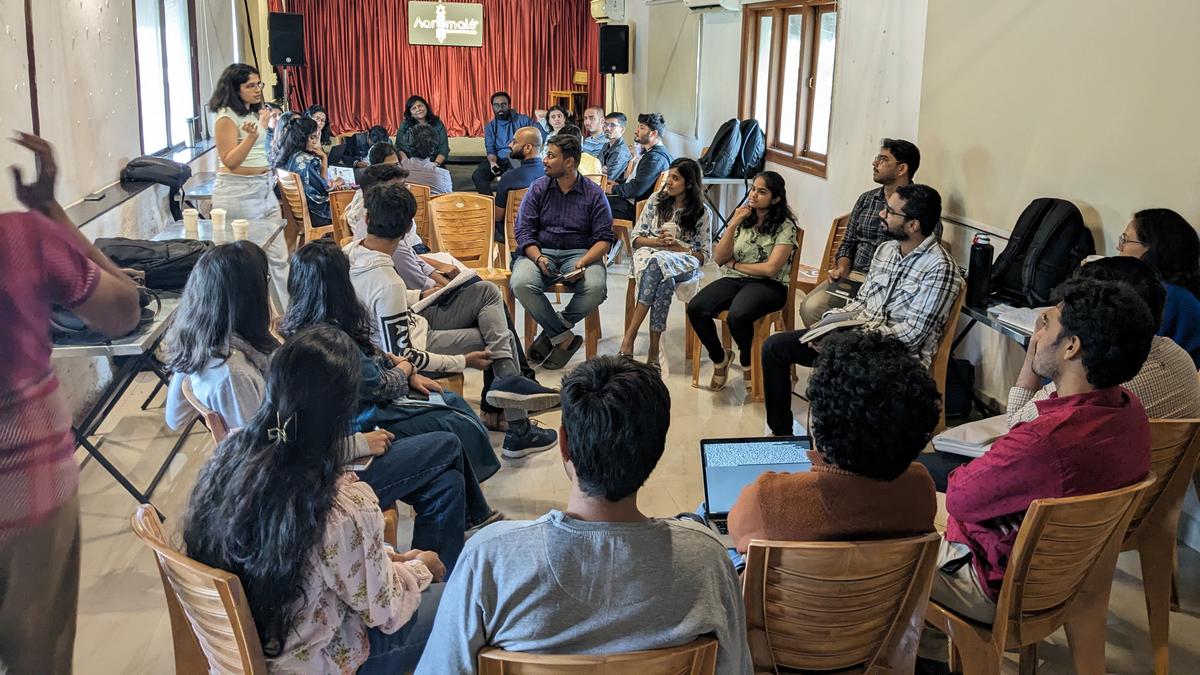Making bells for the Olympic timekeepers: a labour of love

The air is oppressively hot and has a heavy, metallic smell that sticks in the throat and burns the eyes.
In his foundry with smoke-blackened walls, Alois Huguenin uses a huge ladle to pour bronze at 1,250 degrees Celsius into a metal frame.
For three generations, the bells for the Olympic Games have been manufactured in the centuries-old traditional foundry in La Chaux-de-Fonds in northwestern Switzerland – the cradle of the country’s famous watchmaking industry.
The bells are rung for various disciplines, including athletics, track cycling, mountain biking and boxing.
Almost half a century after his grandfather made the first bell for the 1980 Olympic Games in Moscow, Huguenin was preparing the bells for the upcoming Games in Paris.
“If all goes well, an Olympic bell will take three hours of work,” the 30-year-old, equipped with an apron, gloves and protective umbrella, recently told AFP.
Huguenin said he had already delivered 38 bells to Paris at the request of the Games’ official timekeeper, Omega, which has its chronometric testing laboratory about 30 kilometers away in Biel.
“The bell is used to indicate to athletes and spectators when the last lap has begun,” explains Alain Zobrist, head of OmegaTime and responsible for chronometry within the Swatch Group.
It tells athletes that they “have to do their best to reach the finish line as quickly as possible,” he told AFP.
He recalled that Omega has been responsible for timekeeping at the Olympic Games since 1932 and acknowledged that the bells are “a very traditional element”.
“Today, timekeeping is done electronically. The bells are a nod to our past,” he said.
– ‘Proud’ –
Ten minutes after pouring the molten bronze – with the texture and bright orange-yellow color of volcanic lava – Huguenin can release the thick liquid from the mold at a temperature of just 200 °C.
With powerful hammer blows, he breaks the hard, black sand mold in the frame while smoke rises.
The resulting bell is covered with a crust and reveals the work that still needs to be done: deburring, grinding, filing and polishing.
Huguenin made his first Olympic bell for the 2020 Tokyo Games.
Although he is not as obsessed with bells as some collectors, Huguenin says he is proud that his creations are seen by billions of people.
“I put the same energy and passion into all the bells I make,” he says, explaining that he also makes bells for farm animals and, increasingly, for individual occasions such as weddings.
“But knowing that we are participating in the great Olympic celebrations in our own small way is a source of pride.”
Huguenin said the Olympic bells had been a part of his life for as long as he could remember.
“Every time there’s an issue, we watch on TV to see if we can spot them,” he said, recalling looking for his father’s bells as a child.
And “for several years I have been looking for the bell that I made.”
– “One step ahead” –
The bells used at the Olympic Games remain the same, only the edition logo changes.
They are always decorated with the colorful Olympic rings, are about 20 centimeters high and have a diameter of 14 centimeters.
Nevertheless, each bell is unique, Huguenin stressed, because traditional techniques are used and the material is recycled.
The clayey Paris sand used for its mold is not synthetic and is reused several times, he said, pointing out that some grains have been in use for 100 years.
The copper-tin alloy used for the bronze consists of individually obtained recycled materials.
On the shelves next to his wooden workbench, Huguenin keeps a souvenir collection of broken bells made for previous Games in Atlanta, Rio and Athens.
But just a few weeks before the opening of the Olympic Games in Paris, he is already looking to the future.
Of course, bells would have to be made for the 2028 Olympic Games in Los Angeles, he said, but first “the 2026 Winter Olympics in Milan-Cortina are coming up.”
“I’ll start this fall,” he said.
“I’m always one step ahead.”
apo/nl/gv



